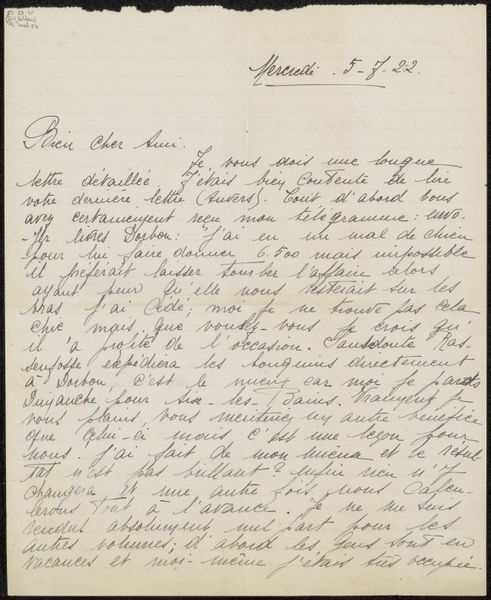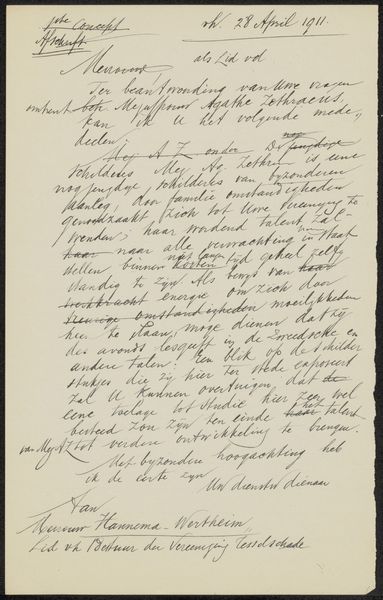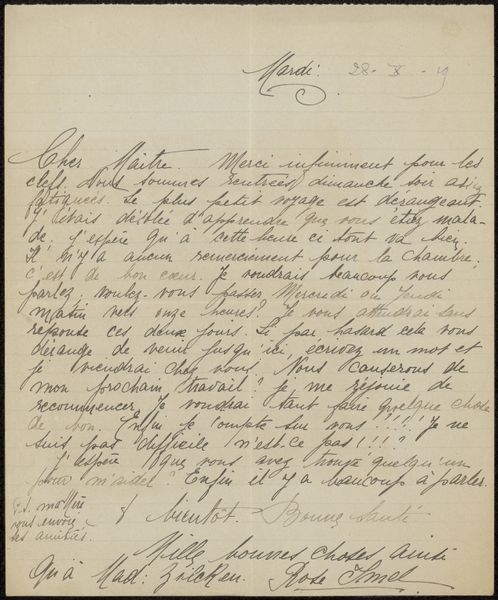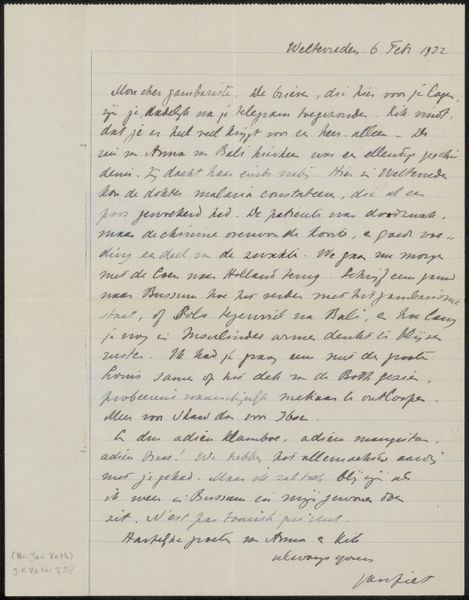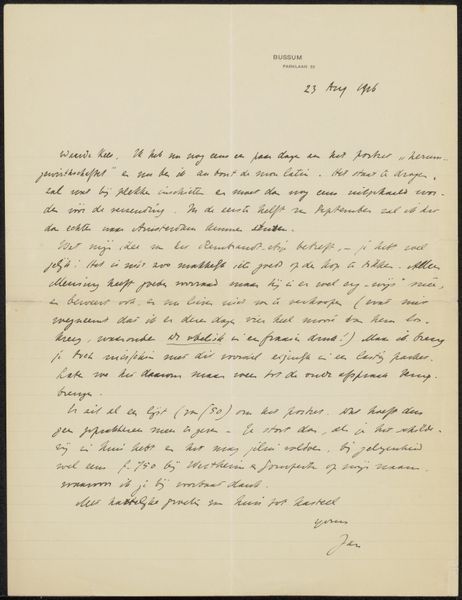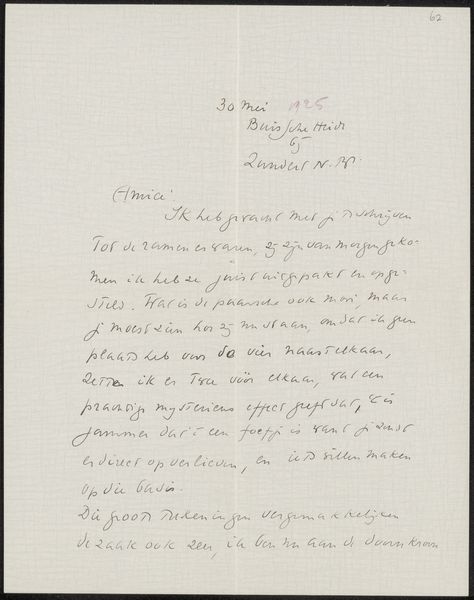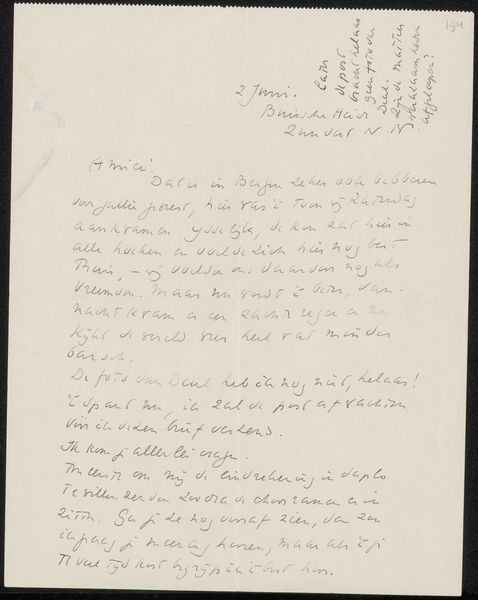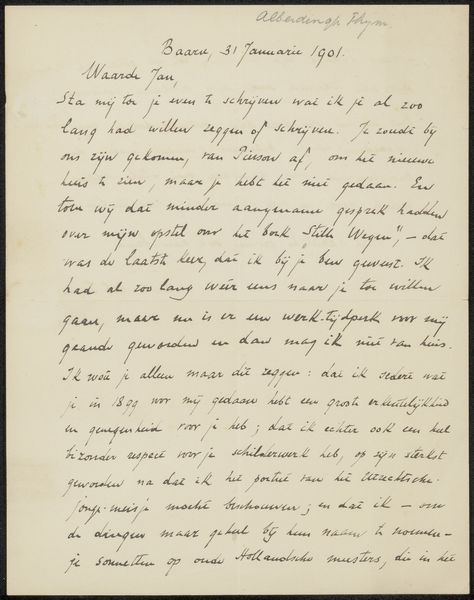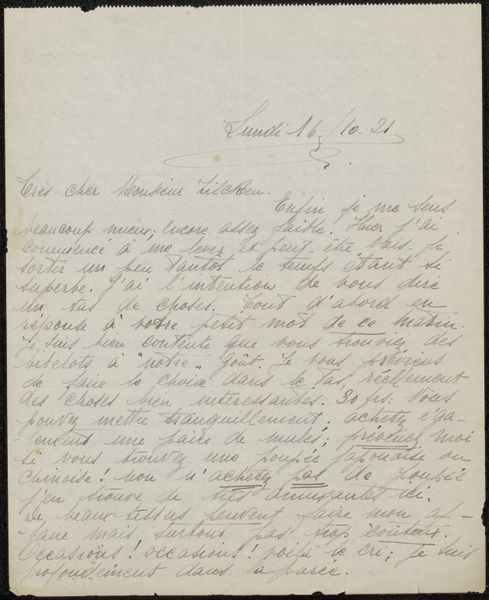
drawing, paper
#
drawing
#
paper
#
calligraphy
Copyright: Rijks Museum: Open Domain
Editor: We’re looking at "Brief aan Cornelis Gerardus 't Hooft," a letter by Jan Veth, probably written between 1894 and 1897. It’s a drawing, using ink on paper, currently held at the Rijksmuseum. It strikes me as quite personal and intimate, almost like eavesdropping on a private conversation. What resonates with you most when you see it? Curator: I'm drawn to the inherent symbolism of handwriting itself. The letter form, a tangible representation of communication across time, carries a unique weight. It is more than a message, isn’t it? This calligraphic style, the loops and flourishes, the pressure of the pen, create a texture not just visual, but deeply personal. Do you notice the letterhead at the top? Editor: Yes, "Hotel de Twee Steden," suggesting it was written while Veth was away from home. Curator: Precisely! The hotel then becomes a liminal space, a transient zone that imbues the letter with a sense of detachment and perhaps longing. How does that hotel influence the tone or context of the image? Is he in one location, while "home" is in his thoughts? Editor: That adds a layer of complexity. It makes me wonder about the urgency or importance of the message, compelling enough to write while traveling. Perhaps there were concerns, requiring immediate attention. The hotel is a place that he isn't fully present. Curator: Exactly. Look too, at Veth’s signature at the end, which serves almost as a seal or a kind of emblem. The cultural significance of the letter – its purpose as communication, both transient and preserved, connects the reader not just to its literal content, but also with the broader human story. Editor: So it’s about the layering of symbols. The letter itself, the handwriting, the hotel, the signature. All combine to form a really specific story. Curator: It really opens our imagination, doesn't it? Bringing our modern selves closer to the past, and someone who wrote the letter, over a century before. Editor: I’ll certainly never look at handwriting the same way again.
Comments
No comments
Be the first to comment and join the conversation on the ultimate creative platform.
